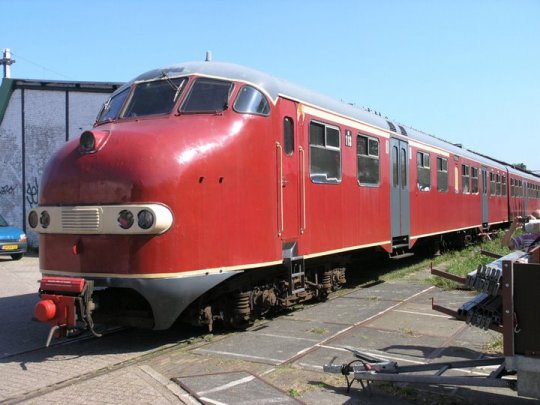On 1st September 1908 the Haarlem Station building was officially put into use. On 30th august 2008 a national Train Festival was held to celebrate the 100th birthday of the station building, the finest example of Art Nouveau railway architecture in Holland.
The Dutch HRCA was asked by the WIJS Foundation to put up a display or layout to give the general public an idea of how the model train industry evolved during that same 100 years. Niek van Ees, Hans van Dissel and Peter Zwakhals made all the preparations and set up the layout. Since Hornby O-gauge would not cover the entire period, and Hans and Peter both are members of the TCS too, we decided that this should be a joint effort of the HRCA and TCS.
We then could not imagine that, due to the very nice weather, the festival would attract over 18.000 visitors.
The 1908 the Haarlem Station building.
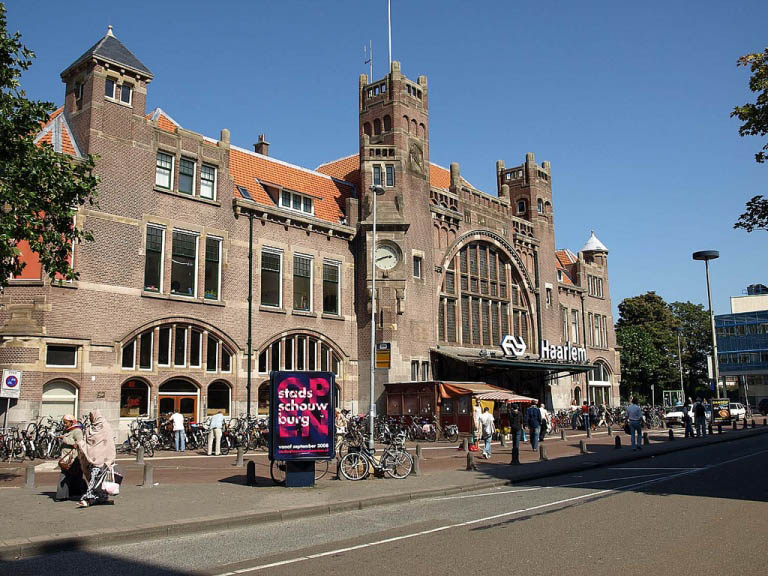
Our layout was set up in the old signalling workshop. The terrace was just in front of that building, and our layout was set up next to some original signals waiting for restoration.
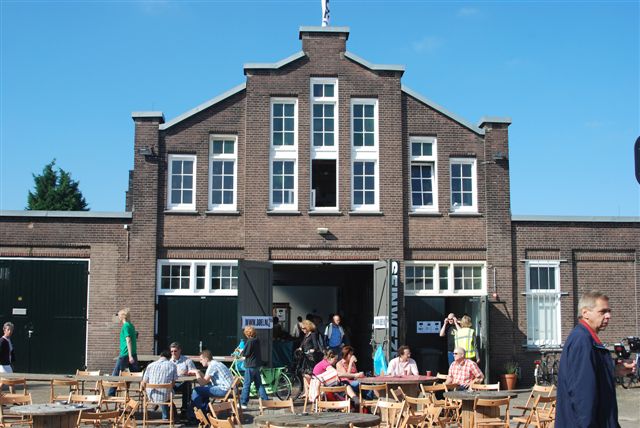
A general view of the layout. To give the visitors an idea of 100 years of model trains, we mainly used O-gauge material. We put up locos, wagons and accessories from early toymakers as Carette and Märklin, through the golden years with Hornby and Bing, then up to the Fifties with Biller Bahn and Bub and ending in the present time with some examples of ACE Trains.
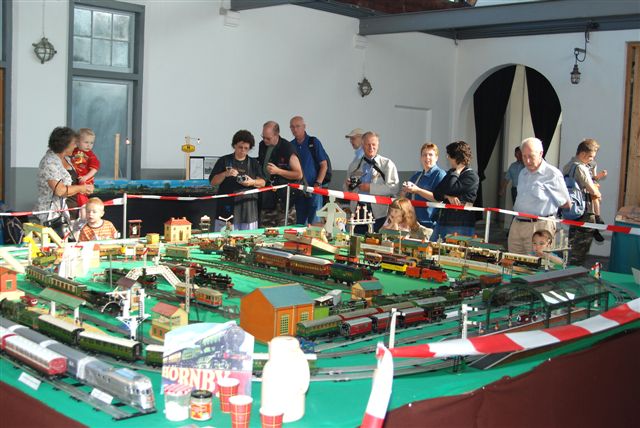
A view from the attic in the workshop. The double track on the outside was mainly used for passenger trains from the golden years and for the current day ACE Trains. Next was a circle of single track, which was used for goods traffic, again mainly from the golden years.
There were two extra loops. The O-gauge loop was made up from Hornby clockwork track of the early Twenties, and was used to display items from that period. The other circle was a working layout of Biller Bahn narrow gauge.
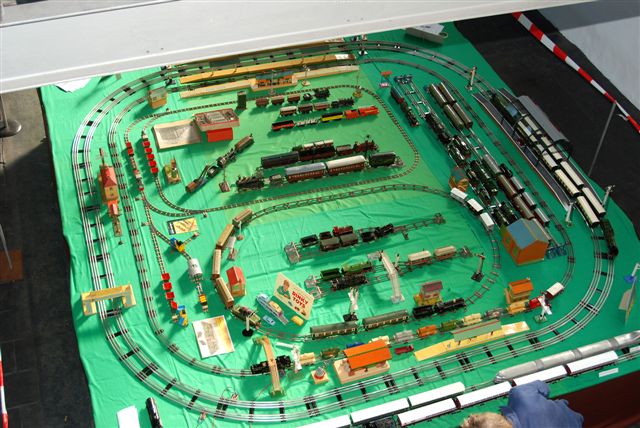
To give the visitor an idea of scale, we included a display of OO-gauge, O-gauge and 1-gauge items. We used a 1925 Bing Table railway in LNER colours for the OO-gauge, while the O-gauge period was show by a very nice Bing Midland Railway Single; clockwork locomotive with matching Carette and Märklin coaches from around 1913.
The gauge 1 items consisted of a 1905 Schoenner live steam locomotive and Märklin coaches of the early Twenties.
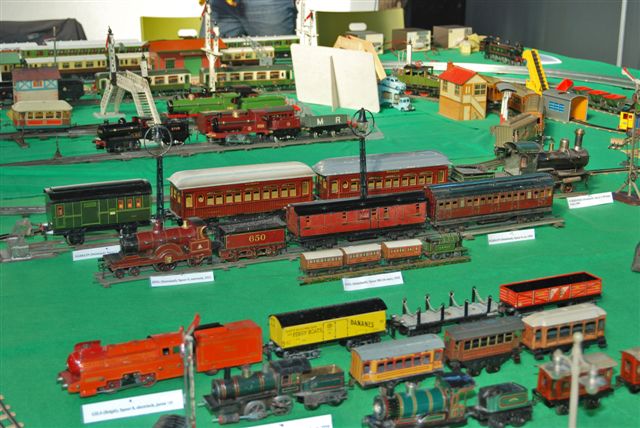
Late '20s Jep type E1 PO (Paris-Orléans) electric locomotive with passenger coaches at the ACE Trains station.
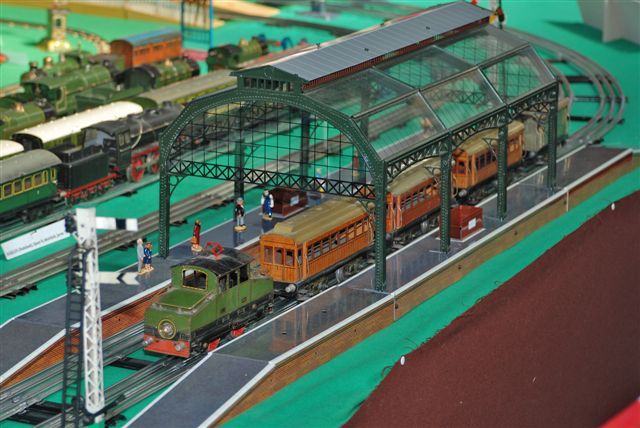
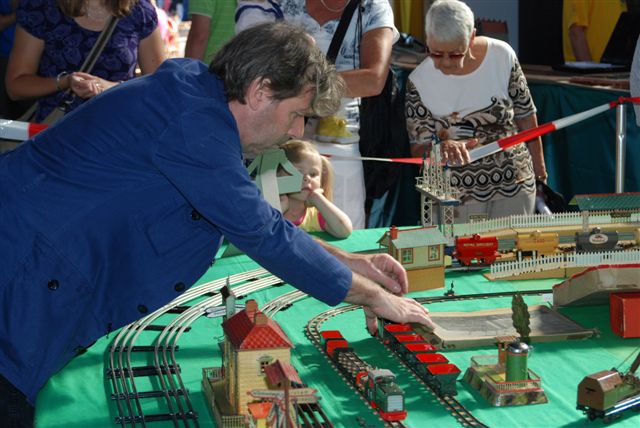
Niek van Ees is, next to Hornby O-gauge, a keen collector of Biller Bahn. He brought some of his clockwork items along (there are also battery-powered Biller locomotives) and during the day regularly showed the public the fantastic wobbling pace of the narrow gauge trains.

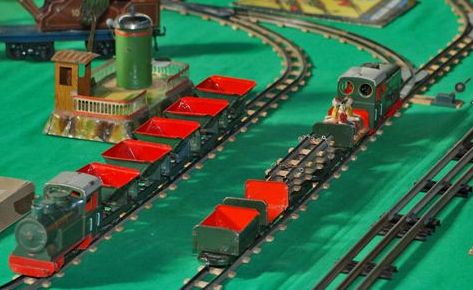
More of Niek's Biller Bahn items in detail. They are a perfect narrow-gauge companion to vintage O-gauge trains.

As shown by the enlarged replica Hornby display board, we managed to keep the spirit of Frank Hornby alive. In this picture you have a nice view of the items on show, covering a period of 100 years model trains.
To the left, behind the Hornby station, were some O-gauge trains by Bing, Issmayer and Gils, while in the centre you can see a Fifties Bub clockwork set modelled after (or rather, inspired by) the then-new electric trains of the Dutch national railways. In the distance the Hornby items are mixed with examples by Jep, Märklin, Carette and Bing.
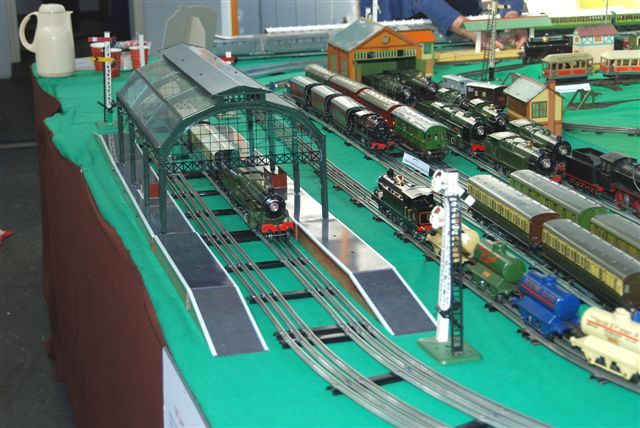
The modern days were represented by the ACE Trains Canopy, painted in the colours of the Dutch Den Haag station.
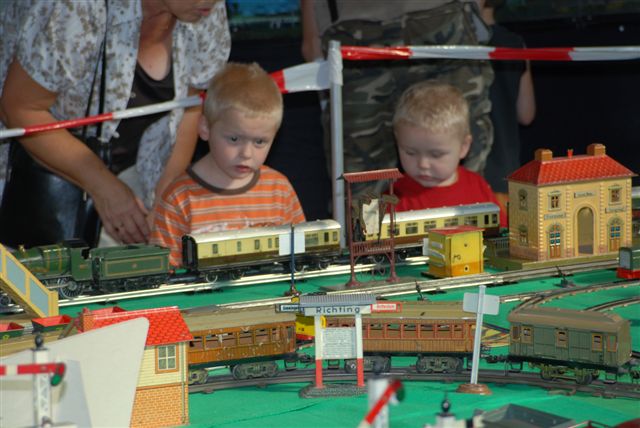
There were some fine-scale layouts in the building too. But the sound of a vintage Hornby E220 County of Bedford, complete with a rake of Corridor Coaches, caught the most attention of some young visitors; and of many adults too!

This young man in particular could not be dragged away by his parents. Being just the right age and height to have the best look of the trains running by, he spent a lot of time at the Hornby Windsor Station.
Model trains were only a small part of the festival. From all over the country you could travel to the Haarlem station by historic trains. From there, you could catch the all-day service to the Zandvoort beach, with this 'Materieel 24' electric train. This is a fine restored example of the first electric train running in the Netherlands in the early Twenties.
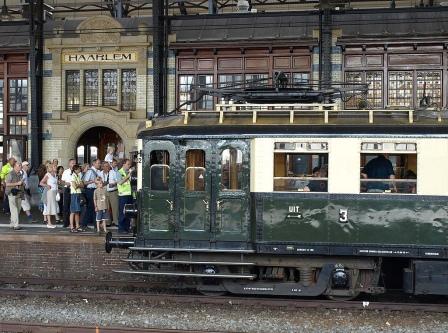
A restored diesel-electric Dutch Railways Series 2200 Goods locomotive from the Fifties found a place close to the Signal Workshop where our layout was set up.
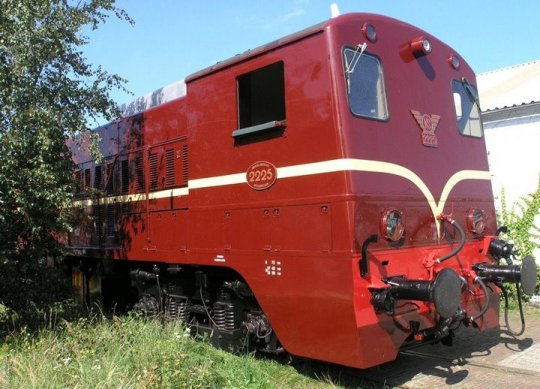
From the same period, a diesel powered Dutch Railways Plan U Passenger train.
